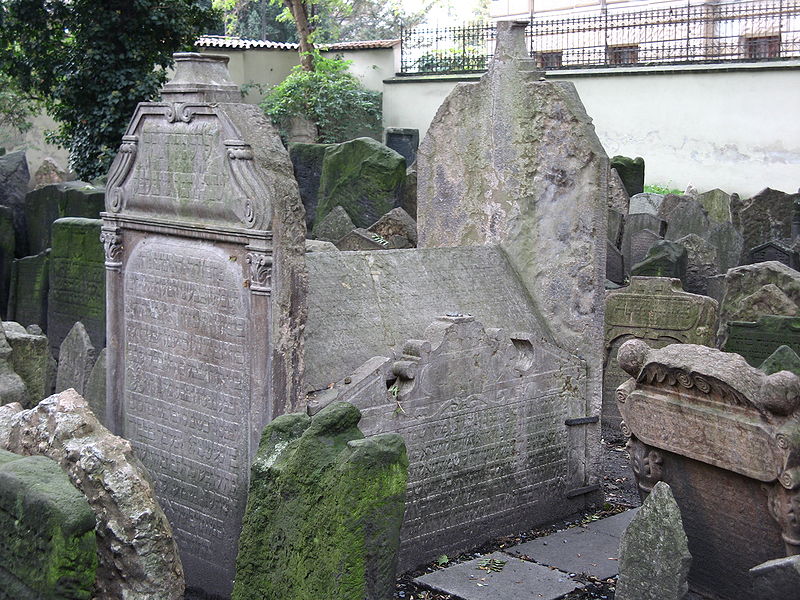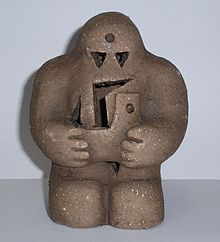My original plan to retell the story of Judah Loew ben Bezalel’s golem for Halloween has changed a bit given recent events in Pittsburgh. I have decided to focus more on the man himself than the story that often has the Rabbi dabbling in occult mysticism. Although Judah Loew is credited as the creator of the golem, his contributions to the Jewish community in Prague, and to Judaism as it is practiced today, far outweigh anything the Rabbi may have accomplished through any sort of magic.
 Rabbi Loew’s body was laid to rest among a great many others in the Old Jewish Cemetery in Prague. Also known as “The Maharal of Prague” (great teacher), Judah Loew ben Bezalel was born somewhere between 1510 and 1530. Less ambiguous is his place of birth; most accounts place his birth in Poland, although his family is said to have come from Germany. Others say he was born in Germany and moved to Poland later. What is not debated is the fact that Rabbi Loew was a great leader to the Jews of Prague.
Rabbi Loew’s body was laid to rest among a great many others in the Old Jewish Cemetery in Prague. Also known as “The Maharal of Prague” (great teacher), Judah Loew ben Bezalel was born somewhere between 1510 and 1530. Less ambiguous is his place of birth; most accounts place his birth in Poland, although his family is said to have come from Germany. Others say he was born in Germany and moved to Poland later. What is not debated is the fact that Rabbi Loew was a great leader to the Jews of Prague.
The Maharal came from a family of well-known Rabbis and Jewish scholars. It should be no surprise, then, that Judah Loew immersed himself not only in the study of the Talmud, but also science, math, physics and astronomy. Loew was an avid reader and his studies included the Kaballah, a mystical interpretation of the Bible, the writings of Copernicus, and Martin Luther’s translation of the Bible in German. It is no wonder, then, that the medieval Jewish community of Prague revered him, and even considered him the wielder of great mystical power.
 The story of the golem is the type of myth that urban legends are borne from, but it is also the kind of myth that has the power to evoke fear and grow the seeds of hatred. Like any urban myth, the story changes depending on who is telling it. In short, the Rabbi created a man made out of clay (golem). He used a Talisman to bring the golem to life during the day when it would be sent out to perform good deeds among the community. At night the golem would be returned to its inanimate form. When the golem had outlived its usefulness, he was placed in the attic of the synagogue in Prague and was never seen again.
The story of the golem is the type of myth that urban legends are borne from, but it is also the kind of myth that has the power to evoke fear and grow the seeds of hatred. Like any urban myth, the story changes depending on who is telling it. In short, the Rabbi created a man made out of clay (golem). He used a Talisman to bring the golem to life during the day when it would be sent out to perform good deeds among the community. At night the golem would be returned to its inanimate form. When the golem had outlived its usefulness, he was placed in the attic of the synagogue in Prague and was never seen again.
Other more sinister versions of the story are told, turning the Rabbi into more of a Dr. Frankenstein than a great leader, and the golem into an out-of-control monster which was destroyed in order to save the people from its ravenous evil appetite. Perhaps it is just as well that the story of Rabbi Loew’s Golem never quite made it into the repertoire of well-known Halloween legends. Personally, I prefer to think of the Rabbi as a great leader and scholar who was revered by his people to the point that they believed him capable of magic.
For further study on Judah Loew ben Bezalel, I recommend the following:
- Judah Loew ben Bezalel (New World Encyclopedia)
- Judah Loew ben Bezalel: The Man Who Made The Golem (YouTube)
- The MaHaRaL, Rabbi Judah Liva ben Bezalel (The Whole Megillah)

Leave a comment